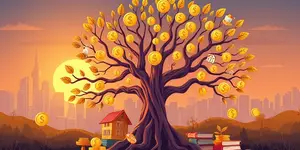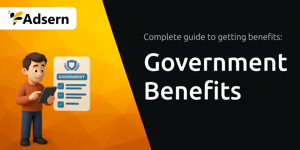
In the heart of America, countless families and individuals confront monthly balances that feel insurmountable, a reality shaped by fluctuating economies, unexpected crises, and cultural pressures to consume. Yet within this challenge lies an opportunity: the chance to transform financial strife into a stepping stone for future success. In this feature, we explore the macro trends, personal stories, and proven tools that together light the path from burdened budgets to boundless possibilities.
This journey blends rigorous data with the raw honesty of human experience, revealing how strategic planning, community support, and a shift in mindset can turn a cycle of stress into a story of empowerment. Whether you are just setting your sights on debt reduction or have already begun the climb, the insights here aim to inspire, inform, and equip you for every twist and turn ahead.
The new year of 2025 ushers in a clear mandate: reducing debt is the No. 1 priority for 42% of Americans. While 21% aim to sock away savings for major purchases like a home or a vehicle, and 14% focus squarely on retirement, nearly every household—97%, to be precise—enters this year with at least one financial target. This widespread commitment reflects a collective desire to regain control and rewrite the narrative around money.
Yet optimism wrestles with reality. A staggering 90% of adults anticipate hurdles on their journey, flagging too many financial burdens and insufficient resources as the chief obstacles. Among these, 38% point to excessive living expenses and lifestyle costs, while 30% identify high-interest loans and credit card balances as direct barriers to progress.
Long-term anxieties deepen the sense of urgency: 52% of those surveyed fear that debt will ripple through their future financial health, affecting everything from investment opportunities to college funds for their children. Another 48% worry it will shatter plans for travel, education, or entrepreneurial ventures they once envisioned.
Analyzing the big picture underscores the scale of America’s debt dilemma. As of Q1 2025, U.S. households shoulder an aggregate credit card balance of over $1.18 trillion in revolving debt, a testament to both increased spending potential and dependence on revolving credit to bridge income gaps.
At first glance, some metrics offer hope. Credit card delinquency rates—percentages of balances at least 30 days overdue—have fallen to 3.05%, hovering near historic lows last seen before the 2008 financial crisis. Compare that to nearly 7% during the Great Recession of 2009, and it’s clear many consumers are prioritizing on-time payments even as balances grow.
Meanwhile, the household debt-to-GDP ratio has dipped to a 20-year low, supported by restrained borrowing habits and robust homeowner equity cushions. Aggregate debt-service-to-income ratios also sit below pre-pandemic levels, indicating that, in theory, the average household retains enough income to cover required payments. However, these comforting averages often mask the struggles of vulnerable segments who operate on razor-thin margins.
Building a financial safety net remains out of reach for many. In 2025, one in three Americans now carries more credit card debt than they hold in emergency savings, a modest improvement from 36% in recent years but still high compared to pre-2023 levels. Without a buffer, unexpected medical bills or car repairs can quickly trigger new debts.
On the brighter side, 53% of households have successfully stacked more savings than liabilities, offering a cushion that reduces the risk of sliding back into debt. Yet 13% find themselves in a double bind: no savings and heavy debts, a circumstance that amplifies stress and can lead to difficult trade-offs between immediate needs and long-term goals.
Generational trends reveal distinct patterns:
Behind every statistic lies a story of perseverance. Consider John, who once teetered on the edge of bankruptcy. Through nonprofit counseling, he crafted a realistic budget that balanced essentials with debt payments, negotiated a 20% interest reduction with his lenders, and consolidated multiple high-rate cards into one manageable monthly payment. Five years later, he rejoices in a debt-free life and newfound peace of mind.
Linda’s narrative is equally stirring. Struggling with mortgage arrears and facing potential foreclosure, she turned to a credit management program that helped her renegotiate loan terms and set incremental payoff targets. The day she mailed her final mortgage check, she described it as “the moment I reclaimed my home and my hope.” Now, she mentors others, guiding them through the emotional highs and lows of recovery with life-changing transformations toward financial freedom.
In a different corner of the country, Matthew and Kendall combined forces to pay off $20,264 in 40 months. By tracking expenses to the penny, downsizing subscriptions, and picking up freelance work, they saved over $5,000 in interest. More than clearing debts, they emerged with a shared vision for their future—a testament to how teamwork and trust can accelerate the journey to solvency.
Even deeper in the data are tales of individuals vanquishing $16,000 in medical debts after illness, wiping out $40,000 following sudden unemployment, and erasing $58,000 through disciplined budgeting over three years. Each story underscores one truth: with tailored strategies and steadfast resolve, no debt is unconquerable.
Navigating the path from obligation to opportunity hinges on toolkits that blend financial principles with personal accountability. Experts recommend the following pillars:
These approaches can be tailored to individual circumstances—whether embracing the “snowball” method of clearing small balances first or the “avalanche” tactic of targeting high-interest debt for maximum savings.
Beyond spreadsheets, debt exacts a psychological toll. Chronic money worries can lead to anxiety, depression, and strained relationships. The stigma associated with financial hardship may prevent people from seeking help, trapping them in isolation. Yet community resources, from online support forums to local workshops, offer connection and encouragement.
Life events—unplanned illnesses, job loss, or family emergencies—often trigger debt spirals. Planning for contingencies through even modest emergency funds can interrupt this cycle, transforming potential crises into manageable setbacks. Recognizing emotional triggers and cultivating resilience are as critical as any numerical strategy.
Recent data points to cautious optimism: credit card delinquency has retreated for three straight quarters, and homeowners generally enjoy strong equity cushions. Meanwhile, aggregate debt-service-to-income ratios remain favorable compared to historical norms, suggesting broad capacity to manage payments.
Nonetheless, vulnerability persists. Nonprime borrowers still face elevated default rates, and rising interest rates could strain budgets. An abrupt economic downturn, such as a recession or a spike in unemployment, could swiftly reverse these encouraging statistics. Proactive measures—like refinancing high-rate debts and building flexible budgets—can hedge against such shocks.
Clearing debts is not an endpoint but a launchpad. Freed from minimum payments that eat into cash flow, households can redirect funds toward growth and fulfillment. Potential destinations include:
When each month brings a choice between debt obligations and new possibilities, choosing the latter becomes a powerful act of self-empowerment. Every dollar saved or invested whispers a promise of freedom, turning long-dormant dreams into vibrant realities.
Ultimately, the journey from debt to dreams weaves together data, strategy, and human spirit. By understanding the national landscape, tapping proven solutions, and embracing the stories of those who blazed the trail before them, individuals and families can chart their own routes to financial independence. The summit is within reach for anyone willing to begin the climb—one payment, one habit change, one victory at a time.
References













